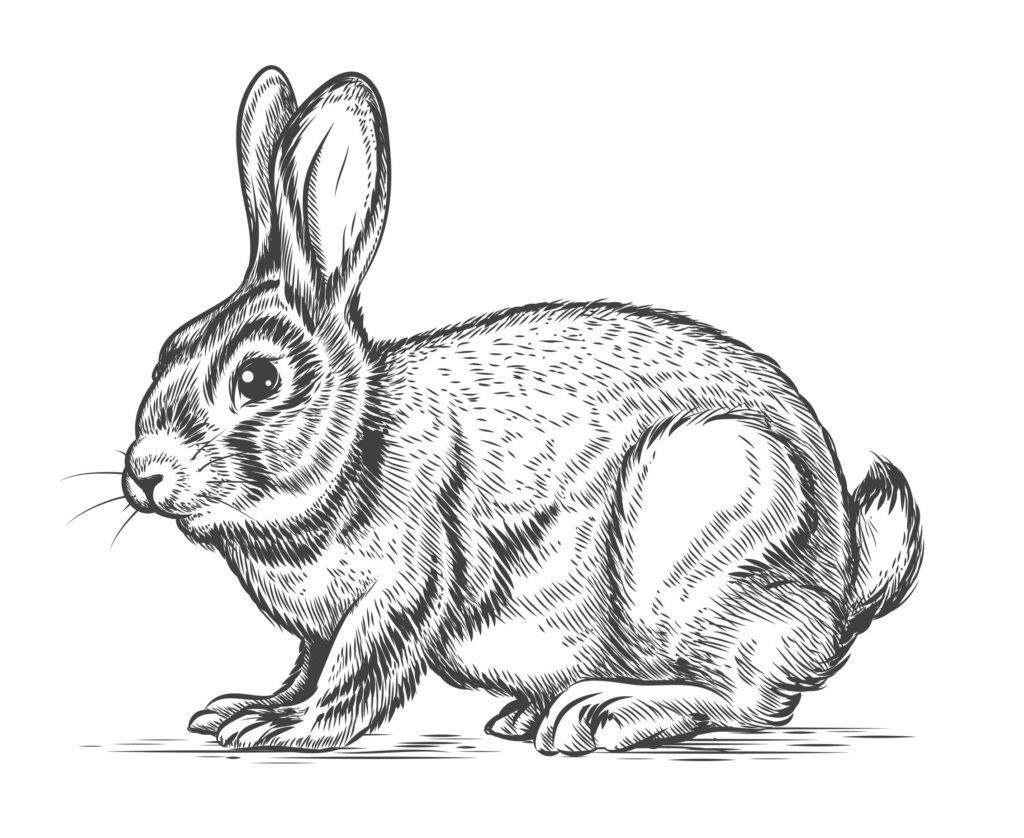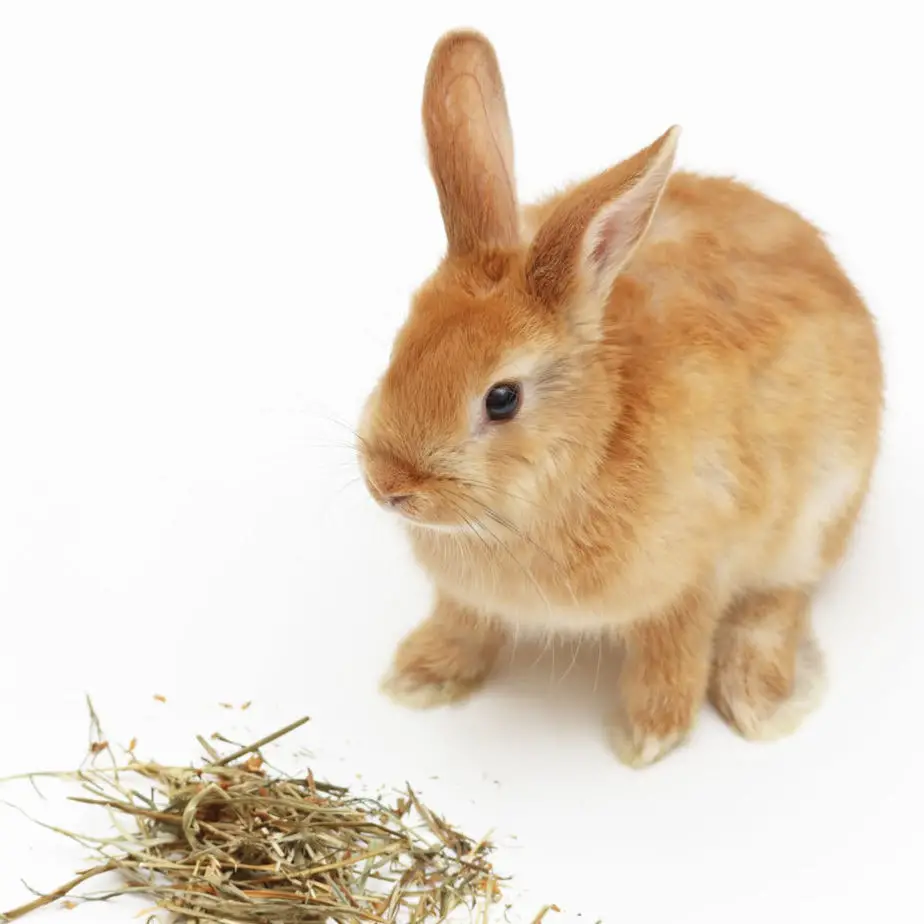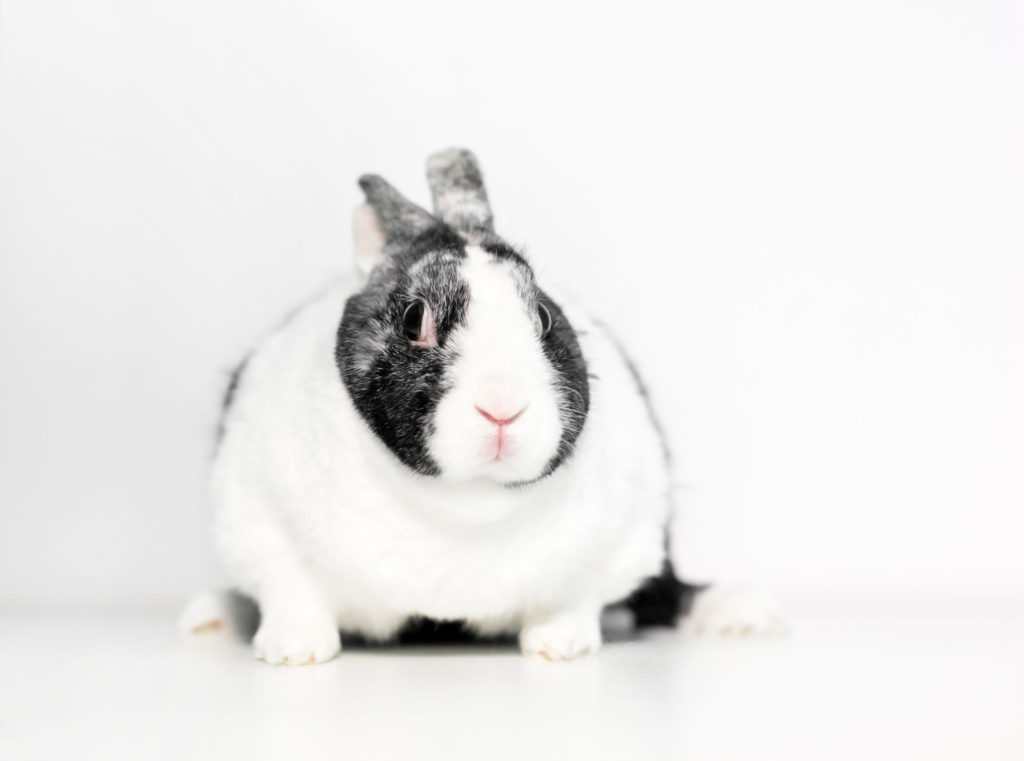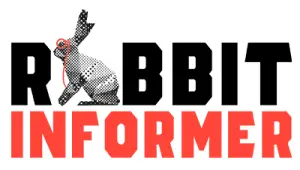
Weight is a big concern here in our world today, especially with the animals that we have. We want them to be with us for as long as possible, so we need to make sure that we have our animals at the weight that they’re supposed to be at.
You can tell if your rabbit is too fat by touch and feel. When it requires effort to feel your rabbit’s ribs and its backside is round or convex, your rabbit is too fat. When you feel your rabbit’s ribs it should feel like grabbing a bag of pens and their backside should be flat.
This article provides many different insights into check if your rabbit is healthy. It is important to know as an owner exactly how to keep your rabbit from being too fat.
How Your Rabbit Should Look and Feel
Just looking at a rabbit to see if it is good or not for their weight won’t cut it. Like dogs, rabbits vary in a variety of shapes and sizes. So, you have to frequently touch and feel your rabbit.
When your rabbit is too thin, you can feel its backbone stick up in a ridge. If it takes effort to even feel their ribs, they’re too thin. You want the in-between. You want it to be where when you feel the ribs, they’re easy to feel but have rounded edges. It’ll feel like how it would feel to pick up a bag of pens.
It is recommended to try picking up a bag of pens before you feel your rabbit’s ribs, just to make sure they feel right.
The backside of the rabbit is a big indicator as well. When the rabbit’s backside is curved in, your rabbit is too thin. You want your rabbit’s backside to look flat, with not too much fluff on it. When the backside is rounded or bulging out, it means that your rabbit is overweight.
Make sure to examine your rabbit frequently as well as actively monitor its weight. Do this so that you are constantly engaged and informed with how your rabbit is doing and have a good idea of where your rabbit’s health is at. If you want a good place to start and find out how big your rabbit may get based on its breed, see my rabbit growth chart here.
Weighing Your Rabbit
When weighing your rabbit you have options to help you depending on your individual circumstance.
Kitchen Scales
When using kitchen scales, you need to make sure that it’s big enough for your rabbit to comfortably be able to be weighed on. Also, ensure that you set the scales back to zero to make sure that you get an accurate reading for the weight.
Hanging Scales
This one can be a little bit more difficult to pull off. It would require the rabbit to be comfortable enough to hop into and hang in a cloth shopping bag. If you don’t feel like this would work for you and your rabbit, DO NOT attempt it. But, if it would be no problem, go for it!
Bathroom Scales
This one requires you to do a little bit of math, so if you aren’t about that I would advise you not to do it. However, if you’re okay with doing a little math, all you need is your bathroom scale and a box. Put the empty box on the scale to see how much it weighs and record it. Then keep the box on the scale and set your rabbit in it and record the weight. To finish it off, subtract the first weight from the second weight and you’re all good!

What to Feed Your Rabbit
It’s very important to make sure that you’re feeding your rabbit the correct foods. The foods that they need might just surprise you.
Rabbit Food
Make sure that you start and end your rabbit’s day with some rabbit food. Make sure to do your research to know how much food you should give your rabbit based on size and breed.
Hay
When it comes to hay, it is super easy! Just make sure that hay is readily available for your rabbit. It contains essential nutrients for your rabbit, and it’s their favorite food by far. See my article all about feeding unlimited amounts of hay to your rabbit here to learn more about the types of hay you should be feeding your rabbit, its health benefits, and the best way to store it.
Grass
Grass, like hay, is very important to have for your rabbit. Use a little less grass than hay, but it should be readily available for your rabbit as well.
Veggies
1/2 cup of green leafy veggies, if available, is strongly advised for your rabbit to have daily. Good veggies for your rabbit include leaf lettuces, collard greens, and kale. Ones to avoid though are cabbage, broccoli, cauliflower, Brussels sprouts, and spinach. Lettuce is probably the most popular and some owners feed significant amounts of it to their rabbits, but rabbits can get ill if they have too much, or the wrong type of lettuce. Find out what types of lettuce you can feed to your rabbit in my article Can a Rabbit Eat Too Much Lettuce? Here’s the Truth.
Treats
You should always have some kind of treat ready to go for your rabbit. Make sure not to overdo it on the treats, as this can cause your rabbit to gain a lot of weight. The occasional treats include a slice of apple, banana, and a 2-inch piece of carrot. More frequent treats to give to your rabbit are fragrant herbs such as cilantro, parsley, arugula, and basil.
How Often to Feed Your Rabbit
You should make sure to feed your rabbit twice a day! Once in the morning and once in the evening. Simple as that. Just check-in 3 times after to make sure that they have a good amount of hay or grass so that their needs are met.
Daily Water Amount
Your rabbit should be drinking anywhere from 1.5 to 5 ounces of water per 2.2 pounds of their body weight. It’s a pretty wide range when you actually crunch the numbers down. So, just make sure that you have enough water in the bottle or bowl and that the water is changed daily.
If you find that your rabbit isn’t drinking the amount of water he or she should, you should keep an eye out for dehydration or other potential issues. To see what signs you should watch for and some cool tricks for encouraging your rabbit to drink more throughout the day, see my article How to Get Rabbits to Drink Water: 10 Effective Tips.
Recommended Amount of Playtime
Rabbits, being very social and energetic animals, need as much playtime as possible! During the day rabbits should be free-roaming, stretching their legs, running around, and interacting with their family or other rabbits. A minimum of 3 hours is recommended for your rabbit. Also, make sure to have a good amount of play toys for your rabbit to make playtime more fun for them.
When these needs are met, you will have a very happy rabbit that you will want to have around you to play with.
Helping Your Rabbit Lose Weight

Like humans, rabbits need a good and plentiful diet to make sure they’re at a healthy weight. Not all rabbits will have the perfect metabolism to be able to easily control their weight, so you may have to help your rabbit lose some weight. This is not abnormal, however, and should not be initially considered detrimental, though it could cause adverse health issues if not quickly controlled.
Some basic guidelines to follow to help your rabbit lose weight include the following:
Feed Hay and Grass
Hay and grass are the healthiest things for them. They need to be eating a ton of it too! As stated earlier, they need to have an unlimited supply of hay and grass to get the proper nutrients needed to make sure their digestive systems are operating properly.
Dry Food Contents
Since dry food is being fed to your rabbit twice a day, it needs to have the correct nutrient amounts to be feeding your rabbit the good stuff. The label of the food needs to have a 12-14% amount of protein per serving and 18%+ amount of fiber. A big mistake is found when you give your rabbit a large portion of food. It is important to take time to crunch the numbers and feed your rabbit 10-15g per 1kg of body weight.
Fresh Foods
It’s okay to continue to feed your rabbit fresh foods. Just make sure to feed them foods that are lower in sugars to help with the weight loss. Foods like this include kale, herbs, carrot tops, and dandelion.
Treats
There is really no reason to stop treating your rabbit. You should, however, substitute store-bought treats for normal dry food, your own treats, fresh herbs, or small pieces of fruit.
Exercise
For anyone or anything that needs to lose weight, exercise is vital! You need to make sure to give enough room for your rabbit to run around, have fun, and be comfortable with so that they will want to be up and active with their rabbit friends.
Weighing Your Rabbit
This needs to happen just as frequently as whenever you examine your rabbit. Make sure you have a reliable and accurate scale in your home that you can use to be able to weigh and make sure to record the weight so you can keep track of how your rabbit is doing.
Examination
You will need to keep track of your rabbit’s health. To do this, examine your rabbit on a monthly basis. Do a ‘touch and feel test’, followed by a weight check-up. Always record your results to keep track and see progress, either positive or negative, regarding your rabbit’s health.
Application
Now you know what to do! Go see what your rabbit looks and feels like to make a conclusion. If your rabbit is healthy, good for you! Keep doing what you’re doing. If your rabbit is too fat, get to work and help your rabbit make sure it gets back to optimum health. This will take some practice to apply, but with your love and attention, you’ll be able to keep your rabbit happy and healthy.
